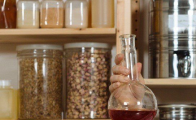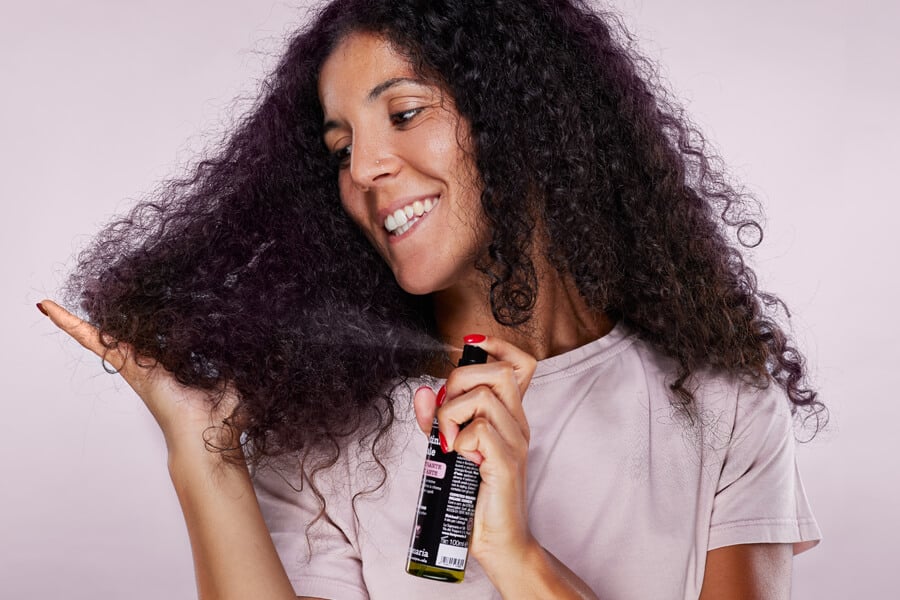The insights of La Saponaria
Natural hair dye without ammonia: discover your most beautiful hair ever
The arrival of white hair or the desire to change our natural color leads us to embrace the world of dyes that can be of various kinds: often we find them based on ammonia and after some application we see hair turned off and emptied. Are there effective natural dyes without ammonia? Yes! In this article we see which ones to choose and why!
Anyone who wants to have beautiful, healthy and shiny hair but the arrival of the first white hair or the desire to change its natural color makes us arrive at the complex world of dyes: there are of course different types of hair dyes, but if we do not choose the one that best suits our hair the result can be to see our hair turned off and emptied. Here’s what we’ll talk about in this article:
- The different types of dyes
- What is ammonia and what is it used for in dyes?
- Why choose a dye without ammonia?
- What’s the difference between ammonia dye and no ammonia?
- What are the dyes that do not spoil your hair?
The different types of dyes
There are several types of hair dyes available on the market, each with its own characteristics and results:
- Permanent Dyes: Permanent dyes are designed to provide a long lasting staining. These dyes contain chemicals, such as ammonia or ethanolamine, which open the cuticles of the hair and allow dyes to penetrate inside the hair. Permanent dyes can completely cover white hair and offer a wide range of shades.
- Semi-permanent dyes: Semi-permanent dyes are formulations that last less long than permanent dyes. These dyes do not contain ammonia and usually use less aggressive substitutes to open the cuticles of the hair. Semi-permanent dyes can provide light coverage of white hair and tend to fade gradually after several weeks of washing.
- Toning: Toning products are used to brighten or intensify the color of hair, without completely covering white hair. These products are generally based on temporary or semi-permanent dyes and can be used to add reflections, correct unwanted shades or maintain an existing color. Toning usually lasts a few weeks and is washed gradually with washing.
- Ammonia-free dyes: ammonia-free dyes are formulations that replace ammonia with other less aggressive substances to open the hair cuticles. These dyes offer a permanent or semi-permanent coloring without the use of ammonia, thus reducing the risk of damage and irritation to the hair and scalp.
- Vegetable or herbal dyes: Vegetable or herbal dyes use natural ingredients, such as plant extracts or herbs, to color your hair. These dyes offer a more natural coloring and are very well tolerated by anyone, even by allergy sufferers or those with sensitive skin. Unlike chemical dyes, where the color penetrates inside the hair changing the structure, dyeing herbs wrap on the hair constituting a kind of sheath. In this sense they also return more volume to the hair and are considered restructuring and real beauty masks. Read more about it here.

What is ammonia and what is it used for in dyes?
When it comes to dyes, the first ingredient that comes out is always her: ammonia. It is a chemical compound composed of nitrogen and hydrogen (NH3) that is used in hair dyeing as an alkaline agent to open the cuticles of the hair, which are the small scales that protect the hair shaft. The opening of the cuticles allows the dyes to penetrate inside the hair and change its natural color.
It has been used in hair dyes for several decades, and has long been considered an essential ingredient for achieving long-lasting and intense results. In recent years, however, due to growing concerns about the health of hair and scalp, have been formulated more and more hair dyes without ammonia. These formulas use other less aggressive alkaline substances, such as ethanolamine or monoethanolamine (MEA), to open the cuticles and allow dyes to penetrate the hair.
It is important to note that although ammonia is still present in most traditional hair dyes, more and more brands are introducing ammonia-free product lines to meet the demand for more delicate and natural solutions, that can preserve hair health and reduce the risk of scalp irritation.
Why choose a dye without ammonia?
Often people come to this conclusion on their own: they go in search of a natural dye without ammonia because after prolonged use of ammonia dyes see hair dehydrated and dull. However, there are also objective reasons to look for alternatives to ammonia dyes.
Ammonia is an aggressive ingredient that can cause dryness and dehydration because it subtracts the moisture naturally present in the hair leaving them brittle and susceptible to damage and breakage. It is not by chance that we often speak of "treated hair" as a type of hair. The so-called treated hair are nothing but brittle hair that have undergone aggressive treatments and therefore need to be restructured.
Ammonia can also cause scalp irritation and skin sensitivity, causing itching, burning and redness.
Choosing a natural hair dye without ammonia offers many benefits. First, it eliminates the risk of damaging the hair structure and preserves their health. Of course not all formulas without ammonia are the same: it is not enough that a hair dye has this feature to be a good dye. In general, however, we can say that dyes without ammonia are less aggressive on hair and scalp.
Do not forget that in any case, the choice of a natural hair dye without ammonia is also an ecological gesture. Many traditional hair coloring products contain chemicals that can be harmful to the environment when they are rinsed. Opting for a natural dye without ammonia such as herbal dyeing, means reducing the negative impact on nature, contributing to a more sustainable approach to beauty.

What’s the difference between ammonia dye and no ammonia?
The main difference between a hair dye with ammonia and one without ammonia lies in the effect they have on the hair and scalp. Here are some key points that distinguish the two types of colors:
-
Cuticle opening: ammonia is used to open the cuticles of the hair, allowing the pigments to penetrate inside the hair. Ammonia dyes have a greater ability to lift the cuticles than ammonia-free dyes. This can allow better penetration of the color, but can also make the hair more vulnerable to damage.
-
Hair health: ammonia-free dyes are considered more delicate for the hair than dyed with ammonia. Because ammonia can remove natural moisture from hair, ammonia dyes can cause dryness, dehydration, and hair weakening over time. On the other hand, ammonia-free dyes are formulated to be less aggressive and less harmful to the hair structure.
-
Odor: Ammonia is known for its characteristic pungent odor, which can be unpleasant when applying dye. This is a disadvantage especially for those who apply the dye: think for example to a hairdresser who every day several times a day applies ammonia-based dyes. This could also have a negative impact on your health
- Scalp sensitivity: Ammonia can cause irritation and sensitivity of the scalp in some people. Ammonia-free dyes are considered more suitable for those who have a sensitive scalp or who are subject to allergic reactions.

What are the dyes that do not spoil your hair?
Each dye has an impact on the hair. If we use chemical dyes, even without ammonia, we can achieve a color lasting over time but not always beautiful, healthy and healthy hair. We can then turn to natural dyes: but when can a dye be considered natural?
A dye to be 100% natural must meet the fundamental characteristics:
- must be free from ammonia, metallic salts, sodium picramate or other chemical additives
- must be without hydrogen peroxide
- must not contain formaldehyde
- must contain only dyeing herbs and/or henna
To be sure that a dye is really natural, it is therefore necessary to read the INCI list very well, making sure that there are no chemicals but only dry cleaning herbs: dyeing herbs are the ideal natural dye without ammonia to have colored hair of the color that we want without damaging the hair structure, but rather having a positive impact on the health of the hair lengths and exponential growth, as well as on the skin.
What we observe when we use dry cleaning herbs:
- The hair is stronger: this happens because the coloring pigments wrap around the cuticle and bind to keratin, filling the scales of the hair. The hair shaft is so much more full-bodied and shiny, with less split ends.
- The hair color is very natural: with dyeing herbs we can not lighten the hair, we can color them red or go tone on tone with our natural color. This will be enhanced by herbs that will give us a color full of natural reflections
- The hair grows more: this is because dyeing herbs do not treat the scalp aggressively, but rather give him the nutrients to stay healthy and we know that beautiful and strong hair roots in a healthy scalp. This can lead to the appearance of more voluminous and strong hair.
- Dyeing herbs permanently color the hair: there is no dye more persistent henna. If we color a platinum blond hair with henna to get a copper red, for example, that dye will never go away from the hair again. That’s why the advice is to always choose a color very similar to your starting: often it is the color that is best in palettes with our complexion and with dyeing herbs we can enhance it with beautiful natural reflections and intensify it.
- The hair is soft and silky: starting to color our hair with dyeing herbs we will no longer have "treated hair" in the common sense of the term, ie dry, dull, fragile and split ends. Instead we will have hair shiny, soft and silky. This is because the herbs are also restructuring as well as dyes.
To learn more about dry cleaning herbs you can read this in depth on our blog.

Written by Simona
She is La Saponaria’s digital writer: always juggling a newsletter to send and a blog article to publish, she lovingly takes care of our social media channels and our e-commerce.
































